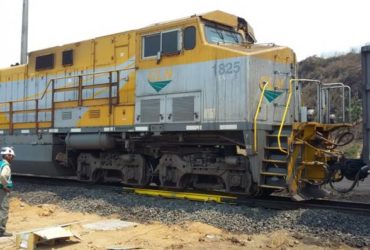
Static scale with attached wagons? Understand where the problem is!
Some of the country's main transshipment terminals are increasingly seeking to increase loading and/or unloading efficiency, however, when the characteristics of static weighing with coupled wagons are used, placing them on a mobile weighing platform, the risk of loss reliability of the weighing, safety and billing process increases considerably.

The main additions of errors and/or metrological uncertainties may be related to the following characteristics: Practical studies in the industry have shown that different types and characteristics of wagon coupling dimensions (e and f) can directly influence the increase in wagon weighing errors. Engage “e” with “e” slides, engage “f” with “f” locks and engage “e” with “f” locks. Are these coupling construction characteristics wrong? No, they can work like that because they are designed for curved entry angles. And why can they negatively influence the engaged static weighing? It is related to the movement between the couplings: between the couplings "e" they slide without problems compensating for the different wheel heights, but between "e" and "f" they lock, impacting the weighing depending on the wagon model and the useful life of the wheel. In these cases, the weighing can vary from + 1,200kg to -800kg, a difference range of up to 2t/heavy wagon.”

Operational characteristics also contribute to increased errors in the weighing procedure using a train coupled to static weighing platforms: it can happen to weigh an axle and even an improper wagon bogie, due to the different types and lengths of wagons, increasing the range of errors up to 10t.
Improper wagon axles that are in the composition queue can be improperly weighed on the static scale platforms, without the perception of the scale operator. These errors can reach up to 10t / wagon. Other characteristics such as unevenness of the ground in the region of the scale and/or in the VP (Permanent Way), in the region of the headboards of the static scales, also contribute to the vertical and horizontal efforts on the platform of static weighing, increasing the risks of weighing errors on a coupled train. Dynamic rail scales are more adherent to transshipment terminals, which require operational agility and do not have sufficient time to disengage from car to car, when weighing.
The dynamic equipment is installed on the railroad without the need for clearance between the scale rails and the permanent way rails, therefore they do not need overhanging structures, their load cells are built in the core of the weighing rail and the weighing are carried out axis by axis, with an electronic and software intelligence capable of grouping the weights of the wagons without risk of weight differences in this model of railroad operation. This is the most suitable model of weighing instrument for the weighing process of coupled wagons. These are just some of the benefits of our railroad scales, want to know more? Talk to one of our experts.




